Is it possible to eat a melon with cholecystitis and gallstone disease
Melon is a unique product with incredible aroma and juicy pulp. The multi-seeded pumpkin comes in a variety of shapes and weighs from 200 g to 20 kg. This melon culture has long been known not only as a wonderful dessert, but also as a dietary and medicinal plant.
From the article you will learn whether it is possible to eat a melon with cholecystitis and with gallstone disease (GSD).
The content of the article
Is it possible to melon with cholecystitis
Cholecystitis is an inflammatory process in the gallbladder, which is accompanied by disorders of the digestive system. In a healthy body, the joint work of the liver and gallbladder is to produce, store and timely transfer bile to the duodenum in the required amount, which should flow freely.
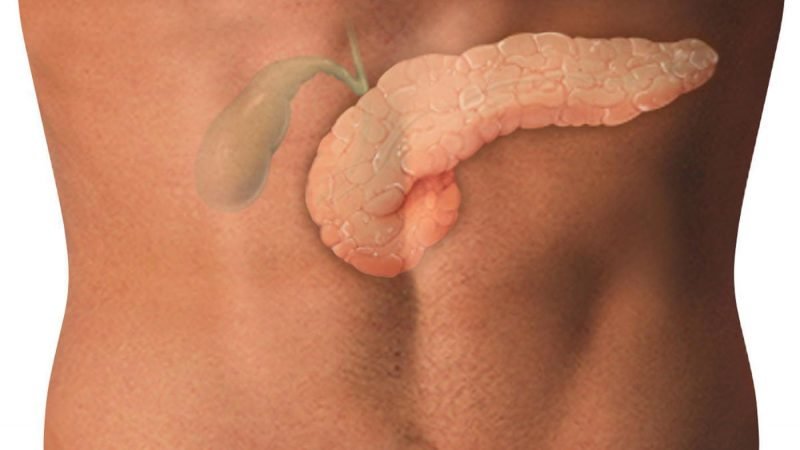
With cholecystitis this process is difficult, so patients are prescribed diet number 5. It involves reducing the burden on the liver by eliminating heavy, fatty foods. The diet focuses on fruits and berries. They must be sweet: watermelons, bananas, pears, melons, strawberries.
Points for and against
Many patients suffering from cholecystitis and gallstone disease are interested in the question of a melon: is it possible to eat a melon and how much? With these diseases, the use of a sweet fruit is allowed, since it contains substances that improve the quality of bile and accelerate metabolic processes in the liver. However, melon is difficult to digest due to its high fiber content.
How melon affects the gallbladder
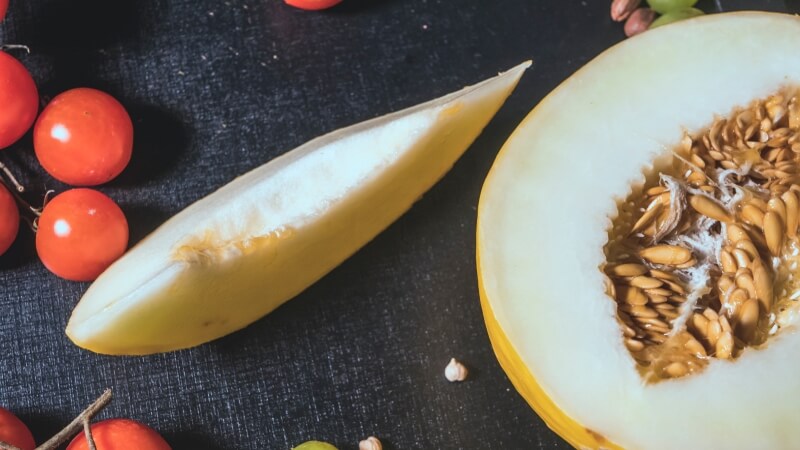
For the full functioning of the gallbladder, the nature of the diet is important. Cholecystitis can be associated with obesity. Eating melon improves bile flow and prevents stone formation. Nutritionists recommend to arrange a melon day once a week during the season: eat only a melon 6-8 times a day, 50-100 g per meal.
Melon composition and properties
Sunny fragrant fruit contains a large amount of vitamins, micro- and macroelements. This is a low-calorie product, per 100 g of which there are 30-38 kcal, depending on the variety.
Sweet melons are a wonderful dessert. It is a source of vitamins A, PP, B1, B2, C. The pulp contains a large amount of folic acid. Melon contains a lot of coarse fiber (fiber) that removes toxins from the body. It contains macronutrients: sulfur, chlorine, phosphorus, potassium, magnesium, calcium, sodium. From trace elements - cobalt, fluorine, manganese, iodine, zinc, copper, iron.
There is a lot of silicon in the pulp, which is necessary for all internal organs. With its deficiency, about 70 other elements will not be absorbed by the body. It improves the outflow of bile, prevents the formation of tumors.
Use for chronic cholecystitis
In this disease, the most important thing is not only to adhere to the diet recommended by your doctor, but also not to overeat. Meals should be fractional. For each meal, it is allowed to eat a small amount of sweet dessert: 200-250 g for the main meal and 100 g for a snack.
Exceeding the dosage is fraught with serious consequences for a weakened body.
In acute form
Acute cholecystitis occurs with an exacerbation of a chronic process and gallstone disease... The dietary regimen during the period of exacerbation is intended to minimize the load on the entire gastrointestinal tract.
In the first 3 days, patients are shown only liquid food (vegetable soups or in the third broth). Then porridge is introduced - they are also made liquid.Melon is completely contraindicated in the acute stage of cholecystitis. A week later, with positive dynamics, it is allowed to taste the melon, but in a processed form.
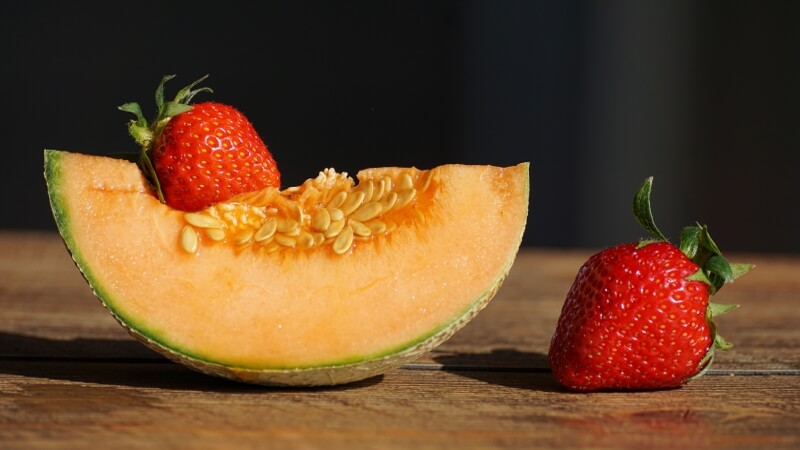
The harm and benefits of melon with cholecystitis
Melon minerals stimulate the regeneration of gallbladder cells and optimize liver function. Vitamins help the body absorb these minerals and are involved in the regulation of water and electrolyte metabolism.
A large amount of fiber makes it difficult to digest the product. And if the permissible amount is exceeded for 1 dose, undesirable consequences are possible in the form of abdominal pain, diarrhea, exacerbation of cholecystitis.
If you buy a fruit of not the best quality with a high content of nitrates, then the chemicals of this group, once in the gastrointestinal tract, are transformed into toxins - this is dangerous even for a healthy body.
Contraindications
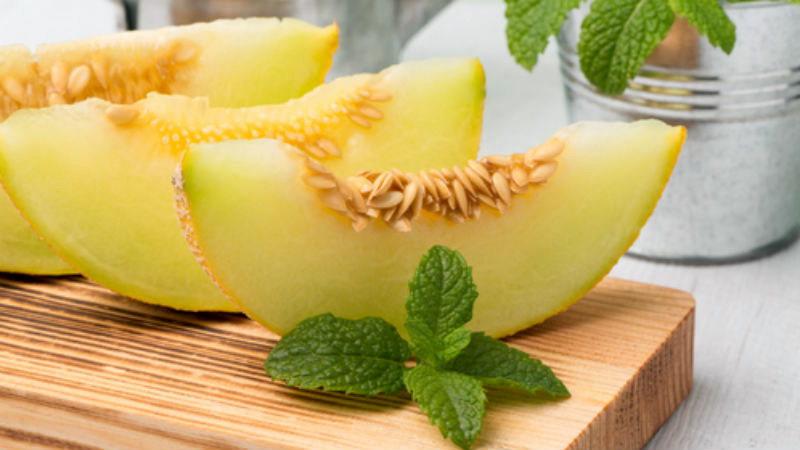
The fragrant fruit is best eaten between meals and is not mixed with other foods. Improper use of melon causes heaviness in the stomach, indigestion.
Attention! Melon cannot be eaten on an empty stomach, combined with alcoholic beverages, dairy and sour-milk products, water, honey, eggs. You shouldn't eat anything 2 hours before and after the melon.
The product is contraindicated in the following conditions:
- sugar diabetes (due to the high sugar content);
- infectious diseases of the gastrointestinal tract;
- peptic ulcer and gastritis in acute stages.
Is it possible to have a melon with LCD
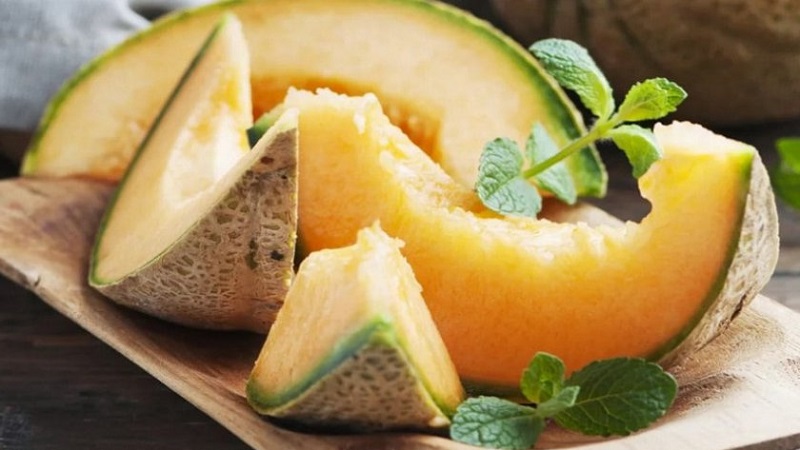
Gallstones is the formation of stones (calculi) in the gallbladder, bile ducts. Sometimes the disease is called "stone cholecystitis". In the treatment of this disease, a properly selected diet is important, in which one must eat so that excess cholesterol does not precipitate and does not form crystals. Proper nutrition reduces the intake of cholesterol in the body.
With gallstones, fatty foods and sour fruits are excluded from the diet, and sweet ones, on the contrary, are introduced. The product in question belongs to a number of those allowed in the diet: melon can be eaten with stones in the gallbladder.
Read also:
Watermelon raises or lowers blood pressure: is it possible to eat it with hypertension.
The most delicious and healthy recipes for making pumpkin juice in a juicer.
Conclusion
Doctors recommend using any products with cholelithiasis and cholecystitis in moderation. Melon, thanks to the harmonious combination of minerals, helps the body to recover.
Melons are among the products that are allowed in the diet for chronic cholecystitis and gallstone disease, but in the acute period it is better to exclude it from the diet. The use of these fruits should be strictly dosed and only with the permission of the attending physician.